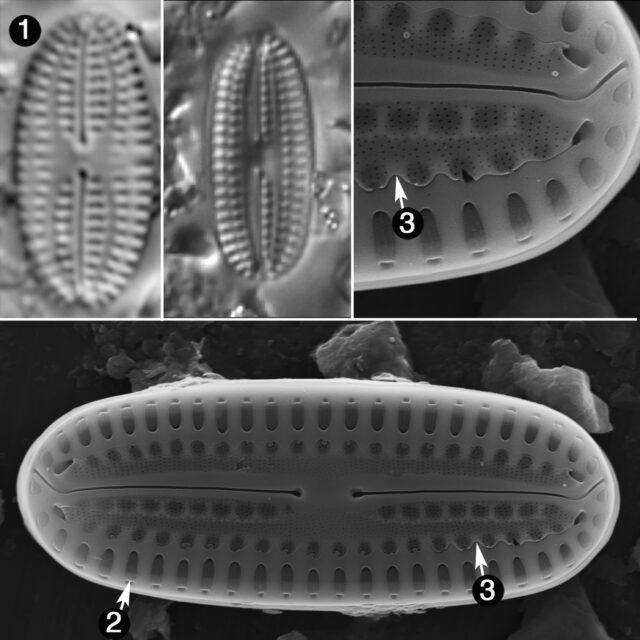Guide to Pseudofallacia

Credit: Marina Potapova, Pat Kociolek
- Cells small
- Stria compose of single elongated areola
- Conopeum present, finely perforated
The genus Pseudofallacia was established in 2012 for small, solitary naviculoid species that had been included in Fallacia. Valves are symmetric with respect to the apical and transapical axes. The raphe is filiform and straight. A finely perforated conopeum is present, which extends along the raphe. Two pores are present at each terminal area of the valve. A single elongated areola makes up each stria. Externally, the areolae are occluded. Internally, the striae are interrupted by a longitudinal rib. The cingulum is composed of unornamented, open bands. The plastids are H-shaped and possess two lobes and a single pyrenoid.
The genus includes a few species (Pseudofallacia arenaria (Sabbe and Vyverman) Liu et al., P. losevae (Lange-Bertalot et al.) Liu et al., P. monoculata (Hustedt) Liu et al. and P. tenera (Hustedt) Liu et al.), and others that should be considered for transfer.
 Diatoms of North America
Diatoms of North America